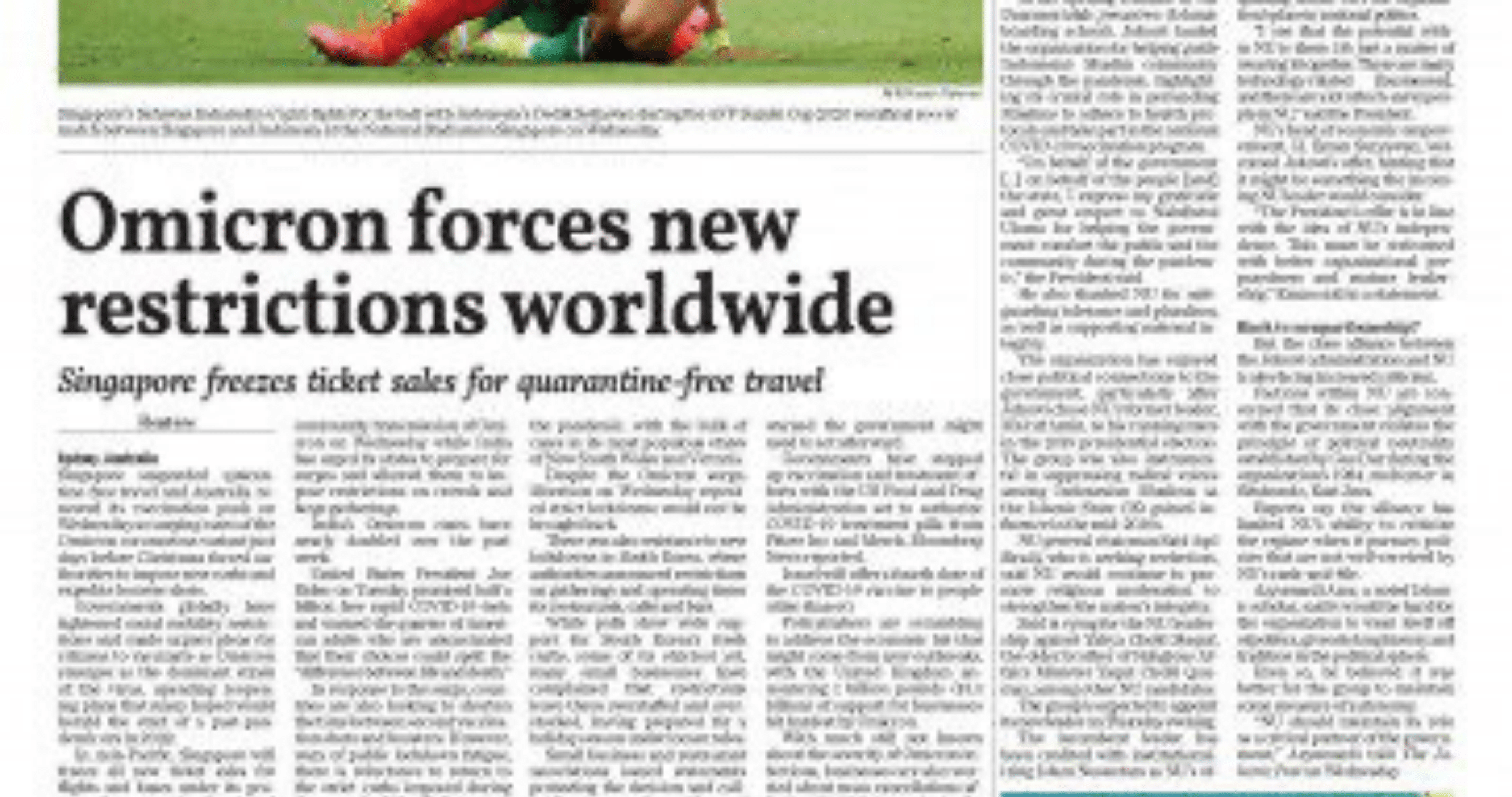My older brother, Uncle Ted, is everyone’s favorite around New Fadum Farm. When our daughters were young, we used to go camping out on the islands of Lake George with Uncle Ted every summer and we all carry memories of a lifetime from those trips. Our grandchildren know him as this jovial Santa-like figure who shows up at Christmas and other holidays. For all of my adult life, I have admired Ted and consider him to be a modern hero of the American Economy. In the last century, it was Horatio Alger. In this century it is Uncle Ted. Why? I think that Uncle Ted personifies what it is that makes the American economy hum.
Ted is an entrepreneur. When he was in his 20s, just out of a graduate program in economics at the University of Connecticut (UConn), he was studying for his actuarial exams while working for an insurance firm in New York City. Way back then, he perceived a good business opportunity in designing small, actuarially sound pension systems for a select class of business owners. He set up a small business working out of a spare bedroom in his home. (I recall this because Deborah and I got bounced out of the guest room to the couch in the living room when we came to visit him). Over the years, he grew this business and now he has forty full time employees. Ted creates jobs.
Ted isn’t a fat-cat capitalist who exploits his workers. Rather, part of his business success comes from the way that he cares for his employees and flexibly adapts to individual needs. (Growing up, I would never have suspected that being flexibly adaptive to individual needs would become one of Ted’s strengths). I recall way back when, before the term telecommuting was even coined, one of Ted’s better employees had to move to Hartford, CT (from Greenwich, CT, where his firm is located) for family reasons. Ted found a way for her to continue to work for his firm, so she could move to Hartford with her family and continue to balance work and family needs.
Ted does not rail against big government. Quite the opposite. If the state or federal government comes out with a program to protect his workers or their family members, he tries to find some way to use it to get an even better deal for his company and its workers. Many years ago, Ted went into the business of buying up rental properties in Greenwich, a high rent district. He had figured out that it was hard for newly minted graduates from UConn (he always preferred to hire from his alma mater) to locate to the New York City metro area, so he got involved in the rental market in a way that could work for him financially and also provide affordable housing for those of his workers who needed it. Stanford University has a similar program for its junior faculty in the Bay Area as does NYU for junior faculty who want to live in close in Manhattan. Ted figured out how to use the tax code and targeted residential and business depreciations and other write-offs to create a win-win situation for his company and his employees.
It should come as no surprise that these days Ted is burrowing into regulations and guidelines from the Small Business Administration (and their banking partners) to figure out how his company can best tap into governmental resources that are being made available from the several trillion dollar bailout package that the US Congress recently enacted. Among other things, this bailout is designed to help small business owners survive through this COVID-19 pandemic. Parenthetically, I learned while speaking with Ted on the phone last night that by design this now too small federal program provides temporary payroll support to his firm for only 8 weeks. That means that in rough terms, the federal government is pledging about one trillion dollars per month to help our economy make it through this first wave, which is characterized by policies of lockdown and social distancing. These are very, very expensive policies, but necessary to help us save lives as we weather the first wave and then prepare for the second wave predicted in Ali’s model and as discussed in a lot of press coverage else these days.
For the last several days, Dan Gordon and I had been talking about the testing-based global quarantine policies that Ali had explored in his simulation (See the “Technical Modeling Notes” at the bottom of this story). Ali’s idea, at its base is simple but powerful and effective: once widespread diagnostic testing becomes available, as a matter of public health policy the government should require periodic testing of the entire population. When this pre-emptive testing identifies an infected person, that person would be required to enter to quarantine (which would most likely be self-isolation). The advantage of this policy is that it detects asymptomatic and early symptomatic infected persons and prevents them from transmitting the virus to others. These are the persons who are going about their normal lives unaware of the danger they pose to others. Ali’s model shows that massive, repeated testing with isolation would be extremely effective and suppress the epidemic quickly. Nonetheless, Dan and I have reservations about Ali’s policy recommendations stemming from our backgrounds and training in public administration, public health, and implementation studies. Does the US indeed have the social discipline to make such a policy work? Do we have the capacity in our loosely coordinated system of federal, state, and local agencies to make it work? Will enough testing capacity be available in time to make it work? Will it cost too much? (Even when compared to the one trillion dollars per month that we seem to be paying now?)
I was excited by and very involved with these discussions with Dan when I made my usual call to check in with my brother, Ted. I wanted to explore these issues with him during our evening check in call. However, I was not optimistic about having a good conversation with Ted about these topics because when he is working on an idea (such as how to meet payroll for his firm), he is like a dog chewing on a bone—nothing can divert his attention from what he is doing and hence what he is willing to talk about. But that evening a very strange thing happened. Ted actually seemed to be listening to me. Ted never listens to what I am trying to say (at least on the first pass) because I am just his little brother. In truth, Ted was not totally listening to what I might have wanted to tell him. He was really trying to learn whether he could beg, borrow, or steal insights from Ali’s simulation model to craft a solution for his company. He started to literally think out loud,
“I don’t know how or when we can get our hands on tests. OK, assume that I could somehow buy a machine for my company that could do all of these tests. What would that cost? Don’t know!! Assume \$15 per test. Then, 40 employees x one test per work day x \$15 per test would be \$3,000 per week in testing.”
Ted was actually figuring out in his head what it would cost his firm to set up and administer its own private testing system based on the results in Ali’s simulation model. He kept on thinking out loud,
“What if a test only cost \$5 each? What if they actually wound up costing \$50 each? \$100 each? What if we tested every other day? Once a week?”
I realized that Ted was performing a kind of mental simulation, trying to figure out if it would be feasible for his company to implement on its own the kind of comprehensive test-based quarantine and social isolation policies that Ali had simulated in his model. Suddenly, Ted fell silent. “It won’t work”, Ted said. Some insight had hit him in the middle of all his mental calculations. After some time, he continued,
“What about the FedEx guy who would be making several deliveries each day? What about the gal who delivers pizza for lunch? I would be spending all of this money on testing to keep my company safe and it would all be wasted the first time an infected FedEx driver or pizza delivery person comes sneezing into the office.”
At that moment, Ted was discovering anew that private actors working within their own local and private circumstances and policies cannot stop a pandemic. There will always be the occasional FedEx drivers or pizza delivery people who disregard private plans or programs conducted by a local firm or institution. Only a globally-conceived and government-backed public health plan is likely to succeed; the current best practice in this area is the classic family of Test-Trace-Quarantine policies that we are now hearing about in the news. These policies aren’t working well now because the first wave of the pandemic is already upon us and it is overwhelming. But they can and will work after we make it through the first wave and are preparing for the second wave.
But Ted was still chewing on this bone and he would not quit. He had concluded that the governmental public health plan would be sufficient for 38 of his company’s 40 employees. Ted, being Ted, was still concerned about the last two workers. Both of them were in high risk categories and faced severe illness or even death if they were to become infected. Ted was content to have 38 of his employees stick with standard public health measures to mitigate risks. They would only have to face low risks of infection that might be present when the economy was finally fully opened. And they are all relatively young and healthy and would have a low risk of severe consequences, like dying, if they were to become infected. Ted continued thinking out loud, drawing out a plan specific to the particulars of his company.
“Both of the high-risk persons presently work from home and are performing their jobs well. One of them is quite isolated, and never sees anyone other than his wife. The other lives at home with his wife and two grown children and doesn’t go out much. My company could assign an employee from the main office to shuttle papers to be signed and other necessary materials. The two of them could do the rest of their work online and over the phone. The person from the office who shuttles back and forth could even help out by picking up groceries from time to time. We would have to support frequent testing for seven people – the two workers, the wife of the first guy, the wife and two grown kids of the second one, and the person shuttling to the main office. We can easily afford that, and it could even work!”
“Uncle Ted’s Plan” relies on two cooperating components to protect his workforce. The government’s public health system to Test-Trace-Quarantine (standard public health stuff) works for the 38 relatively low risk employees. As this global public health program takes effect, infections risks become lower and lower and it might soon be safe for everyone to return to work in the office. Ted’s own company would supplement and reinforce a government quarantine by providing a tight ring of protection around two highly at-risk workers. The cost to the firm (private expenditure above whatever the government spends on global public health measures) would be for frequent tests for two workers and five persons who are in close contact with them. Interestingly, four of the five are family members, not the employees. His company could afford it. It would work.
Ted’s plan is a partnership between a government program and a private program. The mandatory government program places infected persons within a quarantine to protect the rest of society. The private program places persons at high risk in voluntary isolation to protect them from possible exterior infection until the COVID-19 crisis is fully past. Uncle Ted’s plan is clever. It might just work. Someone should build another simulation model to see if it could scale up and work beyond the scope of just his company.
Ali adds
Ted’s idea that collaboration between private sector and government is necessary to implement comprehensive testing is correct. The challenge is how to organize and set up this collaboration so that the cost to the private sector is bearable. One such set up could be that people in their workplace, whether private or public sector would all be subject frequently to an easy preliminary screening test, such as measuring their body temperature, to identify those individuals who might be infected. Such preliminary tests are inexpensive cheap and can be applied in almost any work setting. Individuals with potential infection could be referred to local testing facilities for more definitive testing. This would be good for businesses, which can operate knowing that they have a stable work force. It would also be good for workers, who can feel secure at work and know that they are not likely to unknowingly transmit the virus to their families and friends. Lastly, it would be good for the nation’s health overall, since it puts a large portion of the population under active disease monitoring. Obviously, implementation of such a policy requires widespread availability of higher-level diagnostic testing to complete the identification of new cases. Once identified, these cases would be addressed with the same contact-tracing and isolation policies that are applicable to all newly diagnosed cases.
Dan adds
Ted’s plan, which specifies relatively expensive frequent diagnostic testing for at-risk individuals makes sense while the epidemic is active. Once the epidemic wave has largely passed, however, we could be in a situation where the number of false positive tests is comparable to the number of true positive tests. This can be addressed by reflexing (yes, that’s the correct term) the sample to a second diagnostic test of a different type.
Ali’s plan runs a similar risk. Once the epidemic has largely passed, the number of false positives from a simple temperature screening would certainly be much higher than the number of true positives. Basically, any worker who was running a fever for any reason would be referred for a diagnostic test and sent home until (and unless) a negative result was obtained. That could be both expensive and disruptive.
Maintaining adequate disease surveillance without hobbling economic activity is a balancing act, requiring timely and accurate information, sound judgment from public policy makers, and agility and cooperation from business and health sectors.
Technical Modeler's Notes
Ali’s Test-Based Policies to Control Corona. In his model, Ali presented a comprehensive test-based public health response to the COVID-19 crisis that relied on massive and systematic testing of the entire population. In his simulated world, these policies were extremely effective. Below you find resources that allow you to learn more for yourself about Ali’s policies and why they worked so well.





